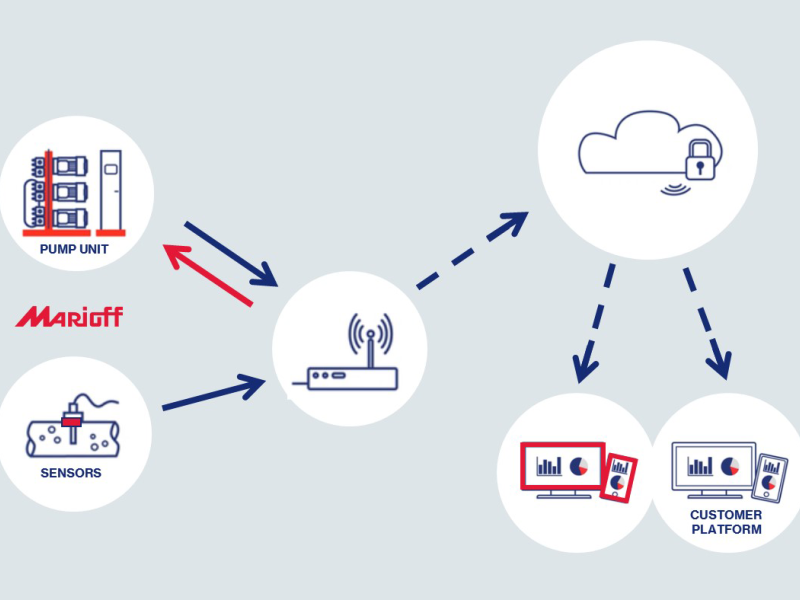Manufacturing and mining operations are conducting highly successful experiments with Industry 4.0. But they are struggling to integrate their proof of concepts (PoCs) projects into mainstream business operations. Beca’s Industrial Business Director Stewart Coleman explains how to scale up PoCs to deliver tangible business value.
At Beca, our industrial clients are in the midst of a significant transformation thanks to digitalisation. Industry 4.0 gives manufacturers and mining companies the opportunity to optimise their operations with smart, autonomous systems fuelled by data and machine learning.
The benefits can be substantial. One of our clients recently tested an IoT solution for 1,500 vacuum sewer pits to reduce instances of overflow. The PoC itself – involving a battery-operated IoT transmitter – was successful but the project hit a wall when it came to integrating the technology successfully into the business.
What was needed – which we then carried out – was an option study to find the best IoT solutions to meet the business’s total needs (beyond verifying the technology successfully performs in its intended application). By conducting a more thorough assessment, we were able to identify and select the various options to produce a ‘scaled up’ solution that integrates the technology into the client’s business and fulfils their wider business requirements. This allowed the client to realise the benefits of reduced maintenance costs, less unplanned disturbances and improved client satisfaction. As a bonus, they are also using the data to reduce their energy costs and are trialling predictive analytics (predicting problems before they happen) using machine learning.
But this type of step change can only be achieved if PoCs work at scale. And that’s proving harder than many organisations imagine.
In my experience, about 75 percent of companies that have conducted successful trials with technology vendors or universities don’t evolve PoCs to the next stage. This is either because the PoC isn’t driven by management to achieve a commercial benefit – or because the team doesn’t follow the project life cycle processes that are essential to commercialise the POC and integrate it with their business.
Why do so many PoCs fall at the first hurdle?
The problem is that a PoC only informs FEL-1 business analysis within the limits of its:
• Scale – PoCs occur in isolation to test the viability of a technology to achieve its intended application. They don’t take into account all the business elements required to operate at scale. You need to consider: how the PoC will work with your business IT, network and engineering standards or your communication protocols; how different stakeholders will access or use the technology; or where the data will be stored.
Failing to take any one of these issues into account can derail the commercialisation process. For example, your PoC may depend on having documents in the cloud accessible by mobile. But, right now, those documents are kept on your premises behind a firewall because they contain your IP. How will you maintain IP security in the cloud? Many of our clients are grappling with this issue.
• Technology – Often, the technology you test belongs to the first person who walked through the door with an idea. It’s great that the PoC worked. But that doesn’t mean the technology is the best on the market for your business or will work at scale.
Many PoCs fail because they either:
• Don’t define the full business benefit the commercialised technology will create or;
• Progress a technology without considering the business needs of a commercialised solution. At this point, PoCs are either dropped altogether or installed as point solutions.
Neither of these responses are appropriate. The first is a missed opportunity. Management may not be able to see the value as the PoC stands. But with more thought and input from other potential business users, the business case often stands up.
The second is always a disaster. The point solution throws off some immediate benefits but soon becomes an orphan that can’t join up to other data sets, making it unusable in an enterprise-wide Industry 4.0 strategy.
This frequently happens with IoT solutions. Plants end up being littered with different IoT-enabled products – condition monitoring as a service, solar as a service, trade waste monitoring, smart forklifts – that either don’t use common infrastructure, don’t conform to different data standards or configure differently.
I call it: the IoT of chaos.
What does it take to commercialise a PoC?
First, make sure the right people are on the case. Often, these are not the people who ran the PoC. PoCs tend to be run by keen, tech-savvy folks who don’t necessarily take a commercial view or know how to present information to commercial stakeholders. Either transition to a new team who are used to getting capital projects approved or give the original team business support to correctly define the project and its costs and benefits. Then:
• FEL-1 – Business analysis (estimate the benefits correctly).
Benefits need to be considered right across the business. Digital technology implementations often deliver a range of benefits that no one accounted for in the original business case. Consider how the implementation can enhance other parts of the business. Will the new data set allow marketing to trace products to drive sales? Can another line of business use the data being thrown off to optimise their operations? The Business change element must also be considered.
• FEL-2 – Select option
The right technology is one that performs the task, is priced competitively and meets your business needs. You need to take into account licensing costs, scalability, future migration paths, security, maintenance and interfaces with other systems. Preliminary designs and pricing are used to inform your decision process.
• FEL-3 – Feasibility (understand the total capital price for capital approval).
Now you should have sufficient information to progress to a feasibility stage to determine the key elements and cost within capital tolerances so you can get a capital budget for the project. It’s not enough to just ‘conceptually’ understand that the PoC will improve your business. Unless you can tangibly demonstrate to stakeholders how it will deliver a better return than another application of capital, it will not progress past this stage.
Industry 4.0 may be supported by bleeding-edge emerging technologies but its integration with business-as-usual is like that of any other capital investment. Understanding how the technology will perform as expected is just the first and, arguably, the easiest step. Then, you need to follow your organisation’s well-established process for capital investment and business integration.
Otherwise, your brilliant PoC will remain just that – a great idea that never grew up.






